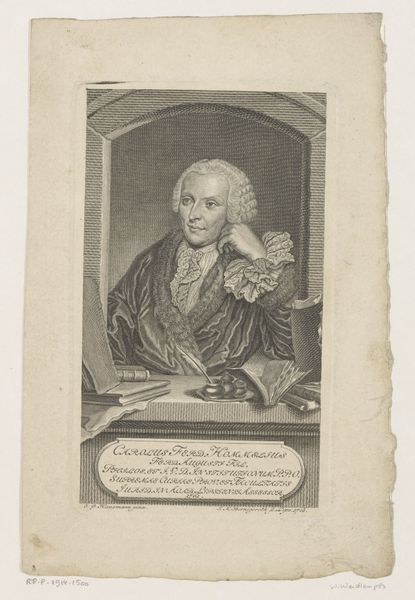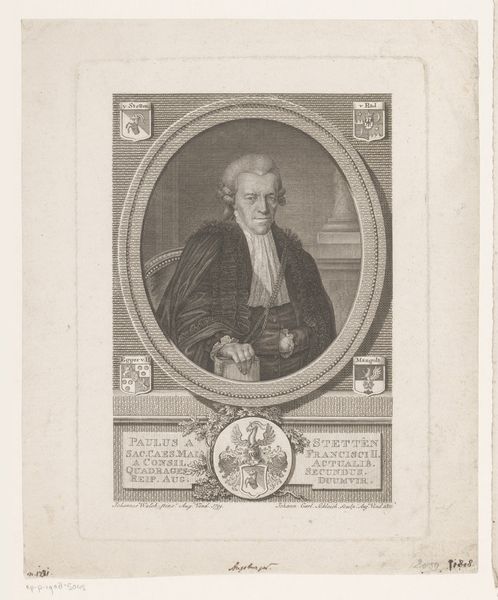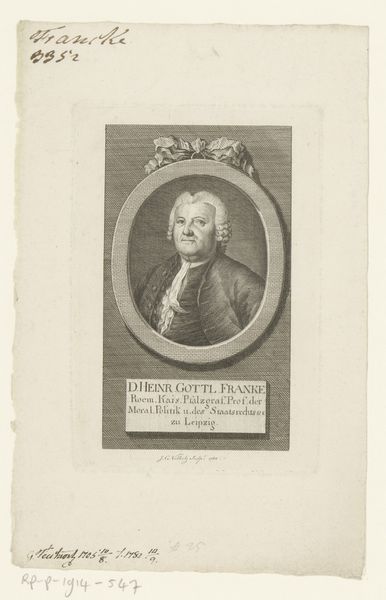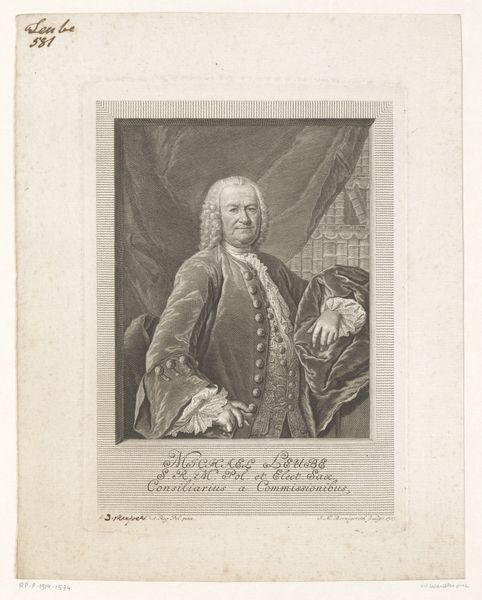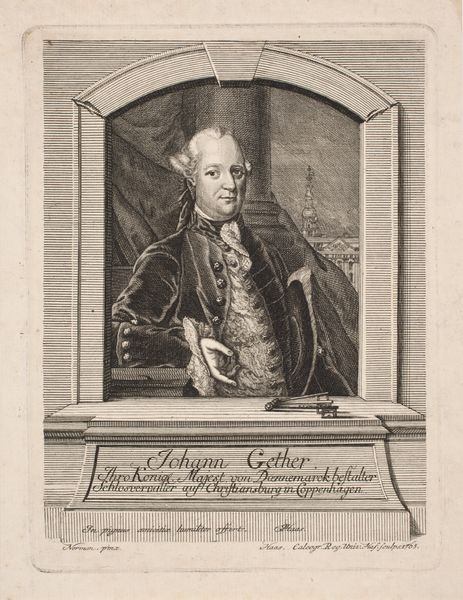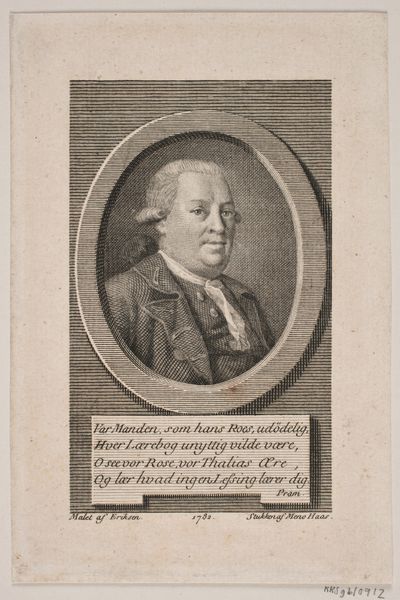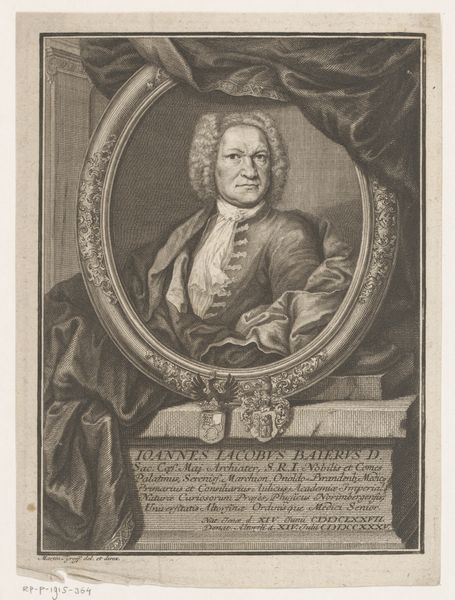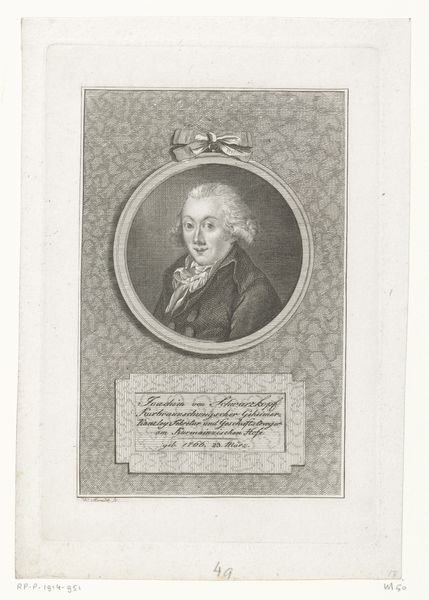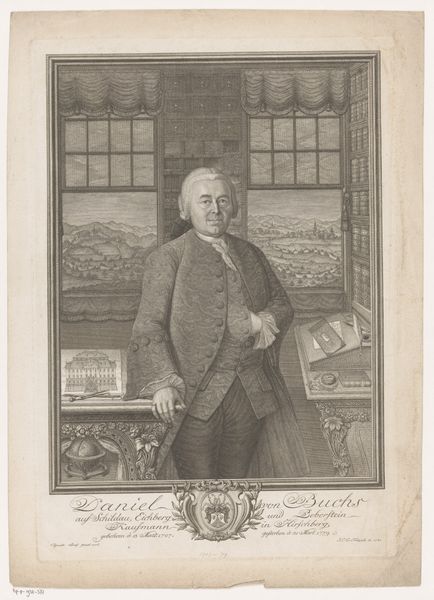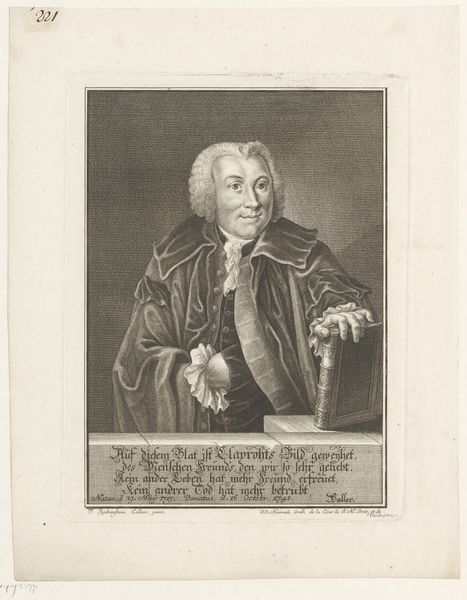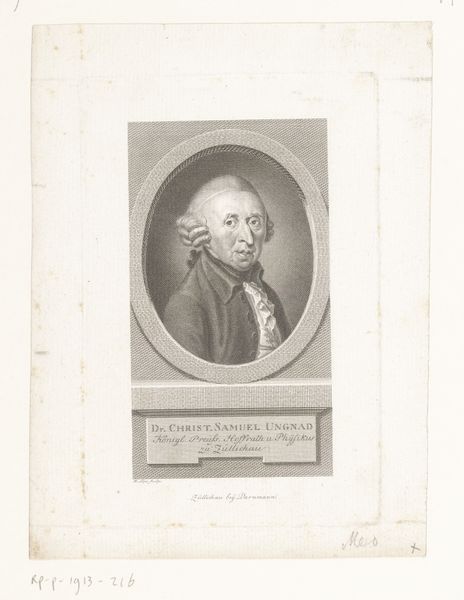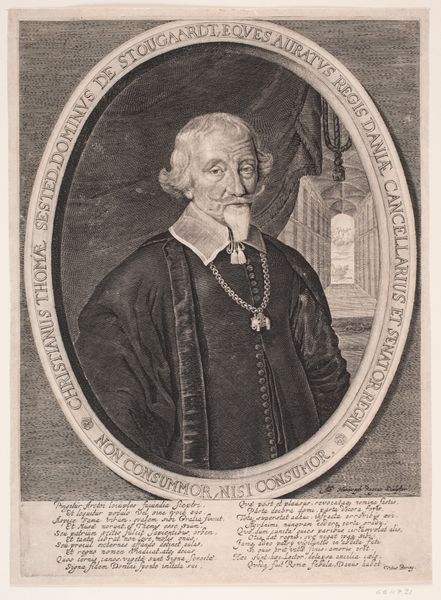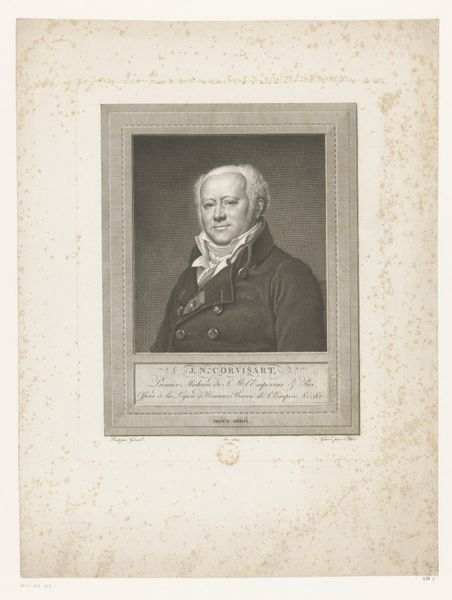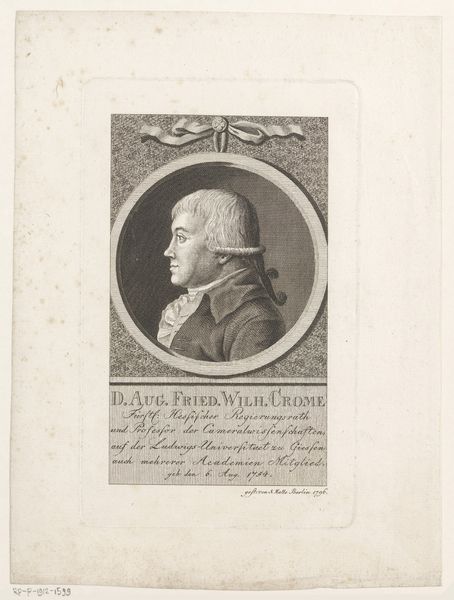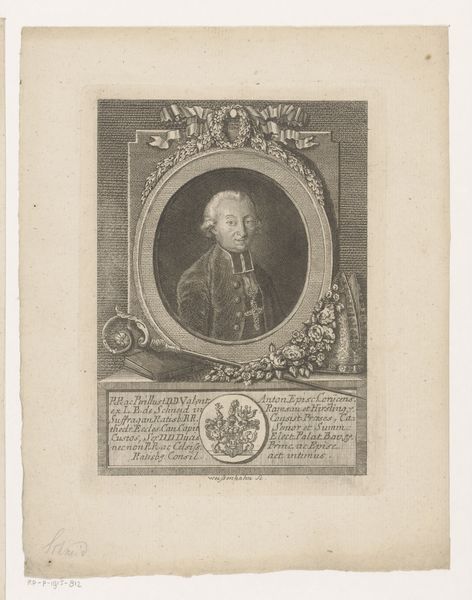
Dimensions: 153 mm (height) x 96 mm (width) (plademaal)
Editor: This is "Christopher Hammer," an engraving by Jonas Haas, created in 1771. There's something quite striking about the subject framed by that brick archway, almost like a stage. It feels like a deliberate construction, setting him apart. What do you see in this piece that I might be missing? Curator: It’s crucial to see this engraving in its historical context. The subject, framed within what resembles a window or perhaps a theatrical proscenium, signals a careful performance of identity. The architecture implies permanence, power, a foundation – literally and figuratively – for Christopher Hammer's status within 18th-century society. Look at the text below, the detailed description of his titles and affiliations. Does that not suggest how intertwined social standing was with public representation? Editor: It definitely emphasizes the importance of status! The titles, the crest, the carefully inscribed text… It's like a résumé etched in copper. How would this have been viewed then, and how do institutions like the Statens Museum for Kunst shape its viewing now? Curator: In 1771, prints like these circulated within a specific social sphere, reinforcing existing hierarchies. They served as announcements of power and lineage. Today, in a museum setting, its meaning is somewhat altered. The institution contextualizes it, prompting questions about the relationship between individuals and institutions, how museums grant legitimacy and how taste has shifted in the centuries since. Are we admiring Hammer, or dissecting the systems that elevated him? Editor: That’s fascinating. So, a piece that once reinforced social order now prompts us to question it? I guess artworks aren't just frozen in time. Curator: Precisely. The museum acts as a prism, bending light in new directions. Editor: I’ll certainly look at portraits differently now, thinking about their original intent versus their modern reception. Curator: And hopefully with a deeper appreciation of art's role as both a reflection and a shaper of history.
Comments
No comments
Be the first to comment and join the conversation on the ultimate creative platform.
